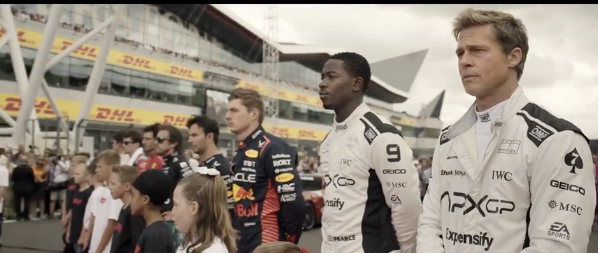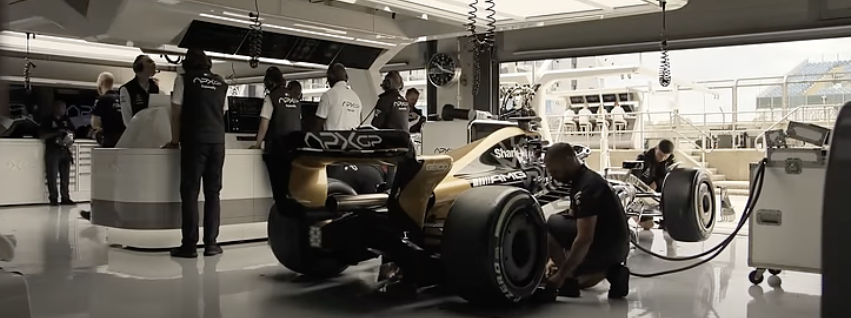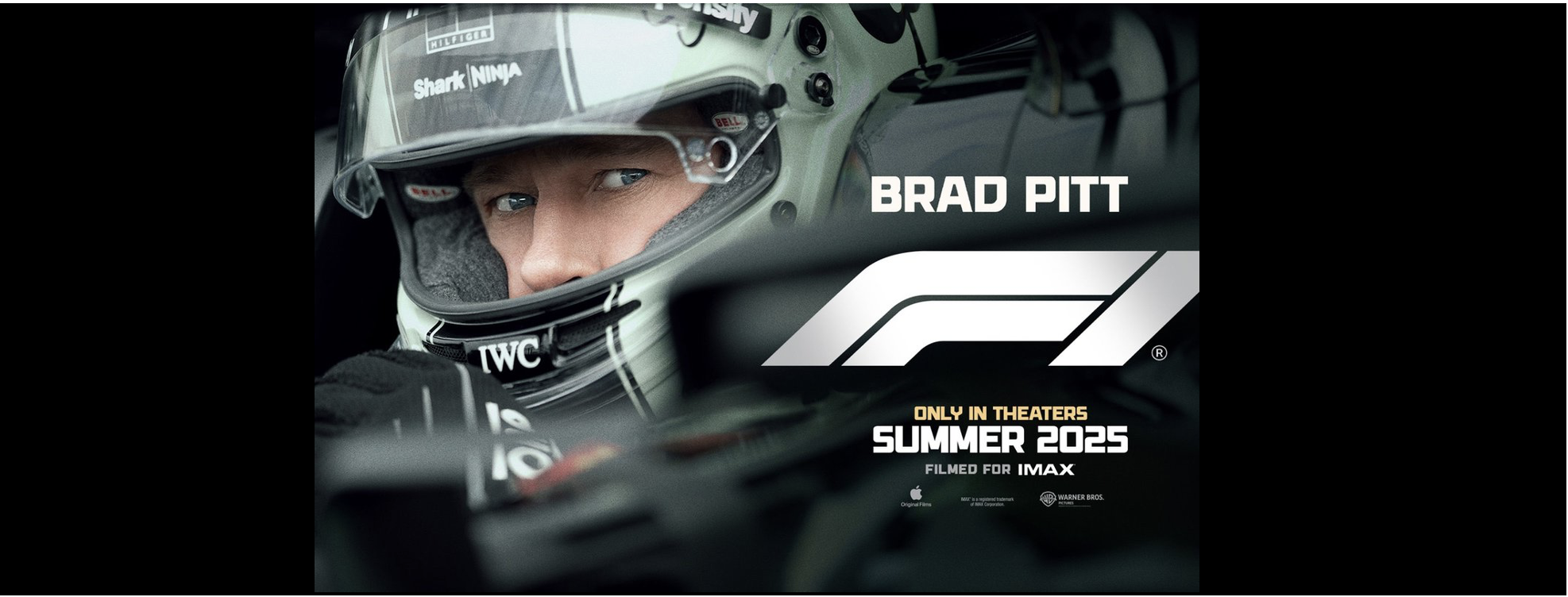Harnessing the power of entertainment is a popular strategy for brands trying to raise their profile and attract new audiences. Last summer we had the Barbie movie. Lego have created a multi-billion dollar movie franchise. And we have multiple sports franchises getting in on the game, inspired by the runaway success of Formula 1’s Drive to Survive, that we posted on here. TV series include Break Point on tennis, Full Swing on golf and Tour de France: Unchained for cycling. Formula 1 is now taking the things to the next level with the movie F1, featuring Brad Pitt, slated for a summer 2025 release. Pitt stars as Sonny Hayes, a driver who returns to race alongside a rookie driver for APXGP, a fictional team on the grid.
In this post, we look at some of the learning from the F1 movie for any brand seeking to use entertainment to as part of their marketing strategy.

1. Commit to a long term vision
Formula 1 has shown the importance of having a long-term vision and then sticking to it. We have seen six seasons of Drive to Survive so far. This creates “fresh consistecy” over time, building distinctive memory structure around the teams, drivers, team principals and also the brand assets linked to the show. The F1 movie can now build on this and take it to the next level. “We’ve already seen the great work and impact of the Netflix show [Drive to Survive], and I think this will take it to new heights beyond that,” driver Lewis Hamilton told The Times in a recent article on the movie (1).
2. Tap into True Star Power
One of the most effective ways to promote a sport through entertainment is by involving high-profile stars. The F1 movie features Brad Pitt, an actor with significant global appeal, playing a former driver returning to the circuit. The film is directed by Joseph Kosinski and produced by Jerry Bruckheimer, the team behind Top Gun: Maverick (see post here), ensuring top-notch production quality. Additionally, legendary composer Hans Zimmer is creating the soundtrack, adding a layer of cinematic excellence.
3. Give Access for Authenticity
Authenticity is crucial in making the portrayal of the sport credible and engaging. The F1 movie crew was granted unprecedented access to the Formula 1 world, including their own APXGP team motorhome and the ability to film in the paddocks. Brad Pitt participated in pre-race ceremonies (see still from the movie trailer (2) below), and the film features real footage from F1 races. Filming took place a six locations on last year’s F1 calendar, with seven more planed for 2024. APXGP has, in effect, become a fully integrated team.
In addition, all the present F1 drivers are due to feature in the film in some way. And the charismatic and highly entertaining former Haas team principal, Guenther Steiner, looks set to appear, as he plays a prominent role in the movie teaser.
Finally, innovative camera work uses new technology which allows cameras inside the car’s cockpit to be remotely controlled, capturing the action from a driver’s eye viewpoint.

4. Get Expert Input
Involving experts from the sport can significantly enhance the accuracy and authenticity of the entertainment concept. For the F1 movie, Lewis Hamilton, a seven-time world champion, is serving as an executive producer. “The 39-year-old has gone through the script line by line, appeared on set, and been a constant sounding board to ensure the authenticity of the project,” explains The Times (1).
The APXGP car itself is a fully functional racing vehicle. The Mercedes team including principal Toto Wolff has contributed technical expertise, even allowing access to tools to test the aerodynamics of the car. Such expert involvement ensures that the film resonates with fans and accurately depicts the intricacies of the sport.

5. Build Buzz Early
Generating excitement well before the release of the movie can help build anticipation and maintain interest. The F1 movie has already created significant buzz with the teaser released during the recent Silverstone race weekend. Publicity efforts, including staged media interactions with Brad Pitt and real F1 drivers, have kept the film in the spotlight. Starting PR activities early helps to build momentum and engage the potential audience, ensuring a strong reception when the movie is finally released.
6. Focus on driving reach and trial
Of course, the F1 movie is likely to appeal to existing fans of the sport. But the key priority is to drive reach to appeal to potential new fans, to increase penetration. “It is hoped that the combination of on-screen drama and the insight into the Formula 1 environment will mean its potential audience will span everyone from diehard fans to those who have never watched the sport before,” as The Times article explained (1).
Conclusion
The strategies employed by F1, for Drive to Survive and now the F1 movie, offer valuable lessons for any brand looking to leverage entertainment as part of their marketing strategy. Tapping into star power, granting access for authenticity, involving experts for accuracy and building buzz earl are all ways to create an effective approach to expand reach and appeal.
SOURCES
1. Time article
